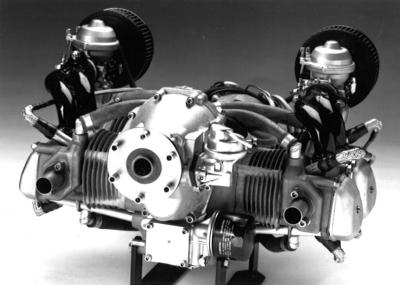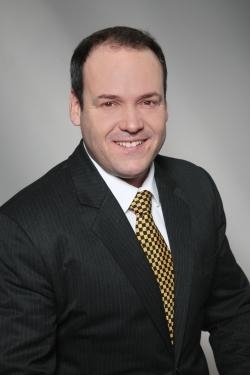Rotax Celebrates The 25th Anniversary Of The 912
BRP is celebrating the 25th Anniversary of its Rotax 912 engine. The company started the production of aircraft engines in the year 1973, and the first certified aircraft engine was delivered in 1975.

Before the 912, the Rotax engines used in airplanes were variants of snowmobile and industrial engines, which were based on Continental and VW engines, and heavy BRP determined that there was a market demand for a modern, reliable engine that would meet the expected performance. In 1985, the company started the development of a 2-cylinder flat engine especially for the aircraft business. Though the performance of 65 HP was substantially higher than the current aircraft engines with 40 HP, BRP expected more. With the development of a 4-cylinder flat engine, BRP wanted to reach the next level – the 80-HP engine’s category.
The Rotax 912 development was a project dedicated to the aircraft market. For the very first time, all conditions needed on an aircraft engine were considered, like high security, high-quality standards for airplanes, etc. In consideration of the experimental airplanes and gliders, the power-to-weight ratio was one of the main targets to aim.
BRP says the reduction gear was a big advantage over other engines. Due to the gearbox the propeller speed of 2000 rotations per minute was significantly lower and resulted in a quieter operation.

The company says that a major advantage in the development of the Rotax 912 engine was the opportunity to influence the whole design engineering. The Research & Development effort was considerable but the big advantage was the ability to supervise the project from concept to production. "A lot of our engineers were pilots and they could share their personal experience and theory. Above all that, they understood the essential requirements of an aircraft engine,” reports Francois Tremblay, director, Rotax aircraft engines.
”It is remarkable that about 20 of our employees on the aircraft team are pilots. This way, we are very close to our market and know about the demands in the field,” he said.

The first flight tests with the Rotax 912 engines were operated on an airfield in Wels, with the Rotax Falke model, a glider from the German Scheibe company. Later, the engine was installed into a Dimona model from the Hoffmann company (now called Diamond Aircraft).
In 1989 the first Rotax 912 engine was delivered out of serial production. The company produced mainly 2-stroke engines up to then. "From the very beginning, when we delivered the 30 first non-certified Rotax 912 aircraft engines in the first year, it was clear that the engine would become a success,“ said Tremblay. The target was the JAR-22 certification (airworthiness requirements for gliders and powered gliders) of the responsible aviation authority (Austrian Type Certification). That was obtained within the first year following the start of production.
To mark the 25th anniversary of the Rotax 912 engine family, BRP is organizing the second Rotax Fly-In taking place from June 5 to 7, 2014 at the airport in Wels, Upper Austria, in cooperation with the Aero Club Weisse Moewe Wels. One of the highlights will be a visit of the BRP facility in Gunskirchen where Rotax engines are developed and manufactured. More information will follow soon.
(Images provided by BRP: Top: First Rotax 912. Center: Falke motorglider. Bottom: Francois Tremblay.)
 ANN's Daily Aero-Term (04.26.24): DETRESFA (Distress Phrase)
ANN's Daily Aero-Term (04.26.24): DETRESFA (Distress Phrase) ANN's Daily Aero-Linx (04.26.24)
ANN's Daily Aero-Linx (04.26.24) Airborne 04.22.24: Rotor X Worsens, Airport Fees 4 FNB?, USMC Drone Pilot
Airborne 04.22.24: Rotor X Worsens, Airport Fees 4 FNB?, USMC Drone Pilot Airborne 04.24.24: INTEGRAL E, Elixir USA, M700 RVSM
Airborne 04.24.24: INTEGRAL E, Elixir USA, M700 RVSM Airborne-NextGen 04.23.24: UAVOS UVH 170, magni650 Engine, World eVTOL Directory
Airborne-NextGen 04.23.24: UAVOS UVH 170, magni650 Engine, World eVTOL Directory





